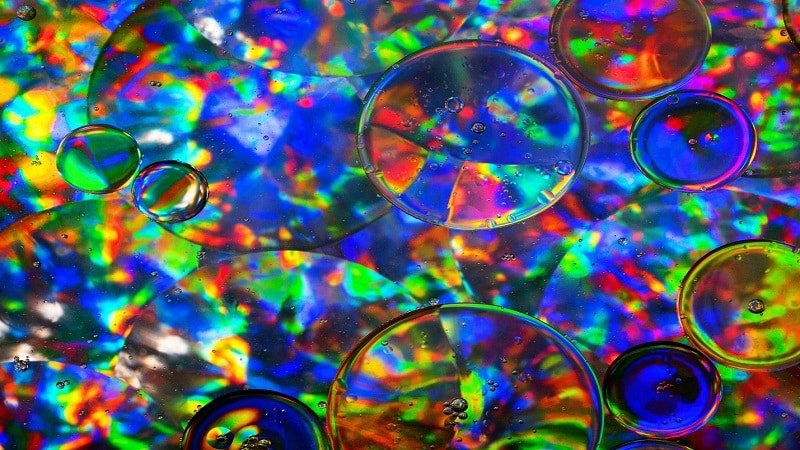Different Colors of Opal

If you adore opal stones, chances are your birth month is October. If not, then you have developed immense appreciation towards different colors of Opal or the colorful radiance of Opal. The beautiful gemstone is known for its unique color combinations and association as the birthstone for people born in October.
This gemstone is attractive because of its unique color combination owing to its gemological structure that reflects light in such a way as to create a kaleidoscope of colors.
Believe it or not, Australia has claimed it as their official and national gemstone.
It is no surprise that its color range has captivated people for years, which makes it so much sought after for use in jewelry, inclusion in museums, and gem collector’s range. Can you imagine that such a gem had been hidden under the deepest layers of the Earth for centuries, and now when it is mined, its beauty shines in the light as if containing magical powers?
So what are the different colors of Opal?
Color Range of Opal
Unlike other gems, opals are given the gift by Nature to display all the rainbow colours in an enchanting moving pattern. The body color of Opal can range from brown, black, grey, yellow, to white. However, the most beautiful opals are vibrant red, pink, blue, green-yellow, black, and violet. This pattern and the way the colors are arranged in this gemstone allow it to take different beautiful forms. This movement across the gemstone’s face is called the ‘play of color,’ which is exclusively used for opals.
What Causes the Different Colors in Opal?
The different colors in the Opal are caused by a concept known as ‘diffraction of light’. If you ever read about prism’s light reflection capabilities in your high school science class, then this might seem familiar too. Just like the prism can refract white light producing a rainbow effect as a by-product.
Diffraction of Light in Opals
So when the white light’s waves touch the top surface of an opal, the light waves are refracted, and as a result, they bounce around the inside of an opal. So, in other words, the light does pass through the Opal’s spheres and gaps, but it starts splitting into different colors of the spectrum. After which the light eventually bounces upwards, it is at this point that we can see the beautiful colors inside an opal. All of this happens in just nanoseconds which is quite miraculous.
Do all Opals Have the Rainbow Spectrum?
All opals do not have the rainbow spectrum, and you may have noticed this if you have ever glanced at multiple opal gemstones. The fact that each stone has a unique color combination is also based on the fact that not all gemstones will have all the colors. Some opals you would notice will only be showing you one color, which is blue.
The reason behind why some colors are not displayed or only one color is visible is because of the diameter and spacing of the spheres. These two factors control the kind of color range you see in an opal. So, in short, the angle and the size where the light splits cause the different color formations in opals.
The Role of Sphere Size in Different Colors of Opal
A small sphere of Opal will only show you the color blue, which is also the most common, and hence, it is not considered in the gemstone category. In contrast, the larger spheres of Opal will be red, which is believed to be the rarest and hence, the most valuable and expensive. The red or orange color in an opal will be produced only when the diameter is about 3500 angstroms. Whereas, if the sphere’s diameter is only 1500 angstroms, you would only see the blue color. Within the range of 1500 to 3500 angstroms, the rainbow spectrum in an opal can be seen. When Opal can display red, it is large enough to show all the other colors of the spectrum; yellow, blue, green, orange, and violet. This is one of the reasons why having red and orange color in an opal can appreciate its value rapidly.
Colorless Opals
Some opals do not have any color, and they are known as ‘potch’. This occurs when the silica spheres (silica is used to make glass) are absent, too tiny, or irregularly present, so they cannot produce any color. Throughout this read, we have discussed that an opal’s worth is based on the number of colors it can depict. So a potch is an opal yet, it is completely worthless. However, it has one important duty: to serve as a ‘dark backing’ for black opals, formed naturally on a potch’s backing. This means you will likely find black opals growing beside a potch.
For those who aren’t aware, just like red opals, black opals are one of the rarest in the opal group of colors and comes from the Lightning Ridge.
Types of Opal
The 4 main types are black Opal, white Opal, jelly opal, and crystal opal. There are other opal variations, such as a ‘boulder’ that has the gemstone category of Opal in a rock form. It will only have a thin vein of Opal. A fire opal would be a transparent kind of gemstone and also the ones that are a rarity.
Our Final Thoughts
Opals can vary based on colors and the type in which they fall. Perhaps this is one of the only gemstones with various colors combinations and types.